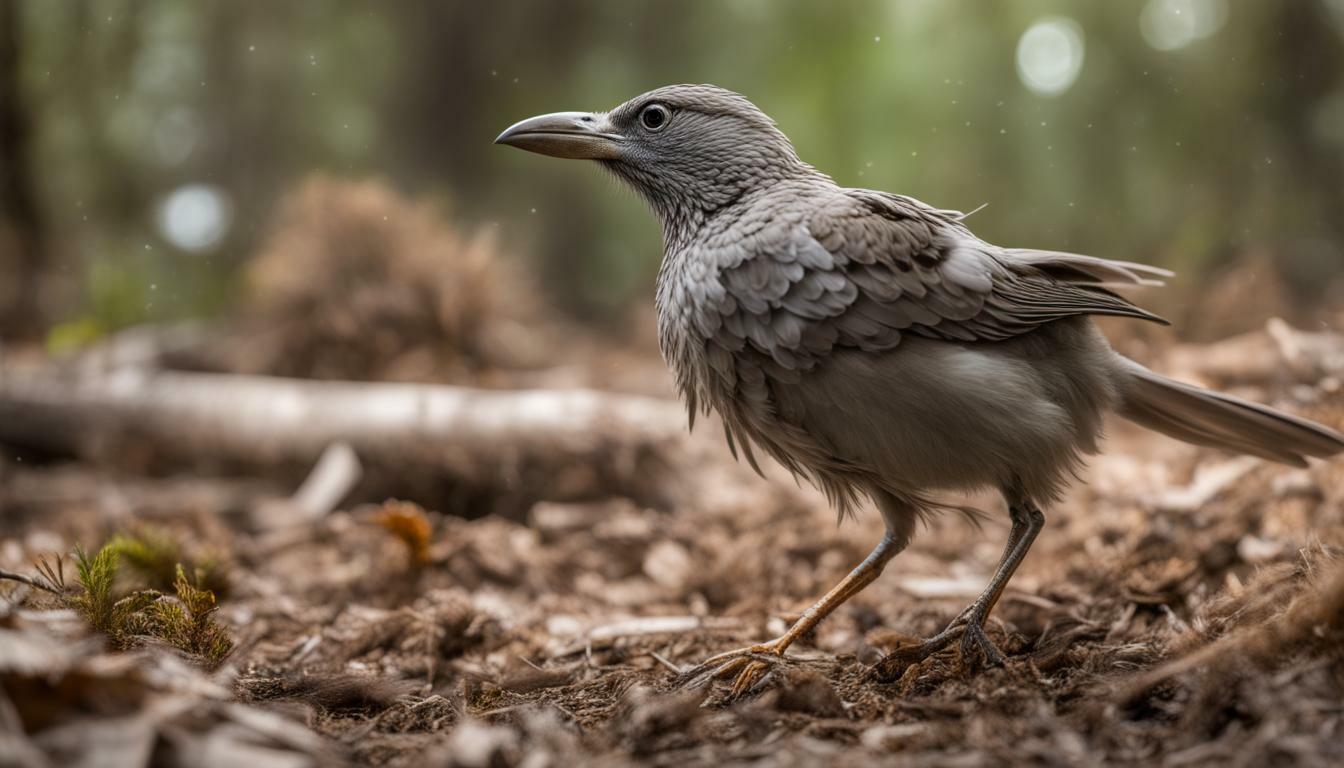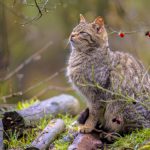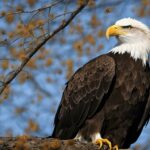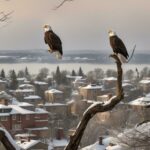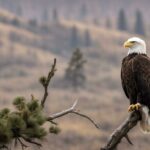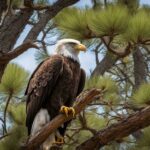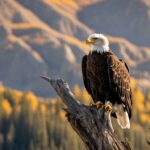Have you ever noticed a bird missing a feather or two and wondered if they will grow back? The answer is yes, birds are capable of regrowing their feathers. Feather regrowth is a natural process known as molting, which all birds go through periodically. In this guide, we will explore the concept of avian molting, the feather molt cycle, as well as shedding and regrowth of feathers in birds.
Key Takeaways:
- Feather regrowth in birds is a natural process known as molting.
- All birds go through periodic molting.
- The feather molt cycle consists of different phases.
- Feathers are shed and regrow in a specific pattern.
- Several factors influence feather regrowth in birds.
Understanding Avian Molting
Have you ever noticed birds with missing feathers? This is a common occurrence for many avian species, as they go through the process of molting. Molting is the shedding and replacement of feathers, which is essential for the health and survival of birds.
Avian molting is a complex process that occurs in several stages. The first stage involves the formation of new feathers, which occurs during the growth phase. Once the new feathers are fully formed, the bird enters the pre-basic molt phase where it sheds its feathers and replaces them with new ones.
The basic molt phase is the final stage of avian molting. During this phase, the bird completely sheds its old feathers and grows new ones. This phase can last anywhere from a few weeks to several months, depending on the species of bird.
Feather growth in birds is a highly regulated process that involves the secretion of keratin, a protein that makes up the bulk of the feather. The rate of feather growth varies among species, with some birds growing feathers at a rate of up to 1 cm per day.
Avian molting is crucial for the survival of birds, as it allows them to maintain their plumage and protect themselves from harsh environmental conditions. By shedding old and damaged feathers and replacing them with new ones, birds are better equipped to fly, forage, and reproduce.
The Feather Molt Cycle in Birds
The feather molt cycle in avian species is a complex process that involves the replacement of old, damaged feathers with new ones. This cycle is important for maintaining the health and functionality of a bird’s plumage, which can impact its survival and reproductive success. The molt cycle is influenced by a variety of factors, including age, sex, and environmental conditions.
The molt cycle typically occurs annually, although some species may molt more frequently. The cycle can be broken down into different phases, including prebasic molt, prealternate molt, and definitive basic molt. During the prebasic molt, birds shed and replace their body feathers. The prealternate molt involves the replacement of flight feathers, while the definitive basic molt replaces any remaining feathers that were not replaced during the prebasic molt.
| Phase | Description |
|---|---|
| Prebasic Molt | Replacement of body feathers |
| Prealternate Molt | Replacement of flight feathers |
| Definitive Basic Molt | Replacement of remaining feathers |
The timing and duration of the molt cycle can vary depending on the species of bird and the environmental conditions in which they live. For example, birds that live in temperate regions may molt in the fall or winter, while those in more tropical regions may molt at different times of the year.
Bird plumage regeneration is a unique and complex process that is critical for the health and survival of avian species. Understanding the feather molt cycle can provide valuable insight into the lives and behavior of birds, and how they are impacted by their environment.
Feather Shedding and Regrowth in Birds
Feathers are essential to birds’ survival, allowing them to fly, regulate body temperature, and attract mates. However, feathers are also subjected to wear and tear, making them susceptible to damage. As a result, many bird species have evolved the ability to grow new feathers, a process known as molting.
Feather shedding and regrowth occur in cycles and can vary depending on the species. Generally, feathers are shed in a specific sequence, starting with the outermost feathers and working inwards. During this time, the bird may experience a period of reduced mobility and vulnerability.
Once the old feathers have shed, the process of regenerating new ones begins. The bird’s body must allocate the necessary resources to grow new feathers, including essential proteins and minerals. This process can take several weeks or even months.
The mechanisms behind feather regrowth are complex and still not fully understood. However, scientists have identified several factors that can impact the process. For example, good nutrition is essential for feather regrowth, as a deficiency in specific vitamins or minerals can hinder the process.
Environmental factors, such as temperature and humidity, can also influence feather regrowth. For example, birds living in areas with harsh climates may experience slower feather regrowth due to the body’s prioritization of survival over feather regeneration.
Lastly, certain health conditions, such as infections or injuries, can affect feather regrowth. A bird’s immune system may redirect resources away from feather regeneration to focus on fighting off an infection, delaying the process.
Overall, feather shedding and regrowth are crucial processes for birds. Understanding the factors that impact these processes can help scientists better understand the complex world of avian biology.
Factors Affecting Feather Regrowth
Feather regrowth in birds is a complex process that can be influenced by various factors. One important factor is nutrition. Birds require a balanced diet that includes sufficient amounts of protein, vitamins, and minerals to support feather growth. Inadequate nutrition can lead to poor feather quality and slower regrowth.
Another factor that can affect feather regrowth is environmental conditions. Extreme temperatures, humidity, and exposure to pollutants can all impact the health of feathers and the ability of birds to regrow them. Additionally, stress and changes in habitat can also affect feather health and regrowth.
Finally, certain health conditions can impact feather regrowth in birds. Parasites, infections, and other diseases can cause feather damage and slow down the regrowth process. It is important to monitor the health of birds and address any health issues promptly to ensure optimal feather regrowth.
Conclusion
In conclusion, birds do grow their feathers back through a process known as molting. This natural process involves shedding old, damaged feathers and replacing them with new ones. The feather molt cycle in birds varies depending on the species and can be influenced by various factors such as nutrition, environmental conditions, and health.
So, if you ever come across a bird with missing feathers, rest assured that it’s only a matter of time before they regrow them. Birds have evolved this amazing ability to maintain their plumage, and they take great care in doing so. We hope this article has answered your question, “Do birds grow their feathers back?”
How Does Molting Affect the Regrowth of Feathers in Birds?
Molting is a natural process that birds undergo to replace old or damaged feathers. During molting, birds shed their worn-out feathers and grow new ones to maintain flight and insulation. This regrowth of feathers is crucial for their survival and requires ample time and energy investment. Understanding how birds regrow feathers can offer insights into their physical adaptation and overall health.
Does the Hollow Bone Structure of Birds Affect their Feather Growth and Molting Process?
The intricate avian bone structure plays a crucial role in the incredible feather growth and molting process of birds. This unique hollow construction, known as pneumatic bones, provides a lightweight framework that enables birds to fly effortlessly. This adaptation ensures that birds can efficiently replace their feathers during molting, allowing them to maintain their aerial prowess and adapt to changing environments.
FAQ
Q: Do birds grow their feathers back?
A: Yes, birds have the ability to grow their feathers back through a process called molting. During molting, old or damaged feathers are shed and replaced with new ones.
Q: What is avian molting?
A: Avian molting refers to the process of shedding old feathers and growing new ones. It is a natural cycle that birds go through to maintain the health and functionality of their plumage.
Q: How long does the feather molt cycle in birds last?
A: The duration of the feather molt cycle in birds can vary depending on the species. Some birds may undergo a complete molt in a matter of weeks, while others may take several months to replace all of their feathers.
Q: How do feathers regrow in birds?
A: Feathers regrow in birds through the development of new feather follicles. These follicles produce the necessary cells for feather growth, which gradually elongate and develop into fully-formed feathers.
Q: Are there variations in feather regrowth patterns among different bird species?
A: Yes, there can be variations in feather regrowth patterns among different bird species. Factors such as the size of the bird, its lifestyle, and its natural habitat can all influence the timing and extent of feather regrowth.
Q: What factors can affect feather regrowth in birds?
A: Several factors can impact feather regrowth in birds. Nutrition plays a crucial role, as a balanced diet with adequate protein and nutrients is necessary for healthy feather development. Environmental factors, such as temperature and sunlight exposure, can also influence regrowth. Additionally, certain health conditions or stressors may hinder the regrowth process.

